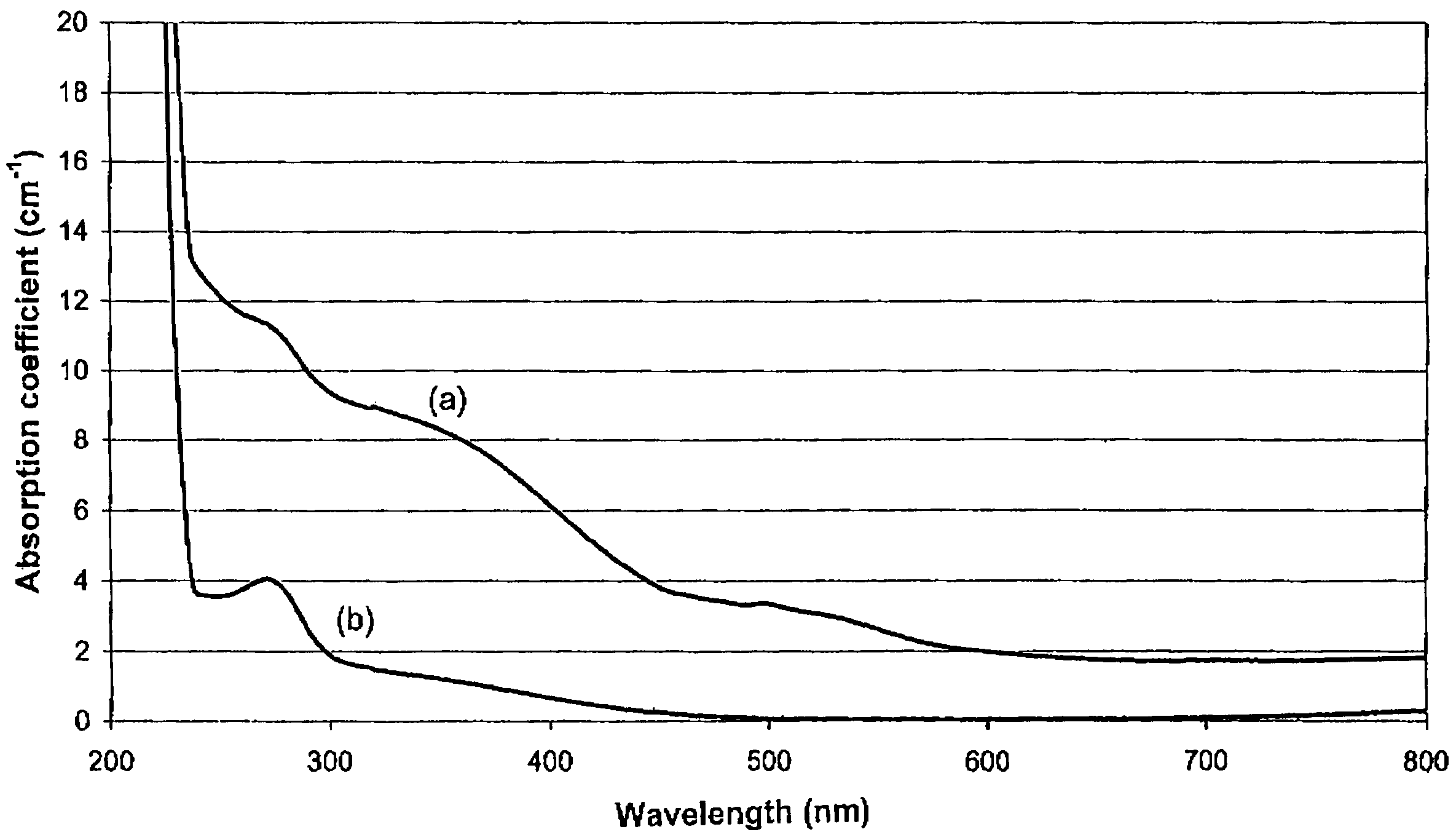Colored diamond
a technology of coloured diamonds and diamonds, applied in the field of producing coloured diamonds, can solve the problems of limited colours and uniformity that can be produced, and the method is not readily applicable to brown single crystal cvd diamonds, and achieve the effect of simple and low pressur
- Summary
- Abstract
- Description
- Claims
- Application Information
AI Technical Summary
Benefits of technology
Problems solved by technology
Method used
Image
Examples
example 1
[0110]A 3.2 mm thick CVD layer was grown on an HPHT synthetic diamond substrate. The surface of the substrate on which growth was to take place was prepared according to the method described in WO 01 / 96634.
[0111]This substrate was mounted on a tungsten substrate using a high temperature braze suitable for diamond. This was introduced into a microwave reactor, an etch and growth cycle used to prepare the substrate surface, and then growth commenced. More particularly:[0112]1) The reactor was pre-fitted with point of use purifiers, reducing nitrogen levels in the incoming gas stream (excluding the N2 dopant line) to below 80 ppb, as determined by the modified GC method described above.[0113]2) An in situ oxygen plasma etch was performed using 30 / 150 / 1200 sccm (standard cubic centimetre per second) of O2 / Ar / H2 at 235×102 Pa and a substrate temperature of 840° C.[0114]3) This moved without interruption into a hydrogen etch at 850° C. with the removal of the O2 from the gas flow.[0115]4)...
example 2
[0122]A 3.1 mm thick CVD layer was grown on an HPHT synthetic diamond substrate using a process similar to that set out in Example 1. The single substitutional nitrogen concentration in this sample was estimated to be approximately 0.5 ppm from the strength of the 270 nm feature in the absorption spectrum.
[0123]The layer was polished into a round brilliant of 0.49 carats that was graded as light brown, VS1. It was then annealed at 2100° C. for twenty-four hours under diamond stabilising pressure of approximately 7.5×109 Pa (75 kbar). After repolishing to 0.44 carats, it was then graded as fancy light greyish green, VS1.
[0124]The culet of the round brilliant was then enlarged to allow an absorption spectrum to be recorded. By itself, the absorption spectrum was insufficient to explain the green hue of the stone. Photoluminescence spectra (with a HeCd laser or Xe lamp excitation) showed strong green luminescence from defects (H3 and other unidentified defects) that were formed by the ...
example 3
[0125]A 3.10 mm thick CVD layer was grown on an HPHT synthetic diamond substrate in a process similar to that set out in Example 1. The single substitutional nitrogen concentration in this sample was estimated to be approximately 0.5 ppm from the strength of the 270 nm feature in the absorption spectrum. The absorption spectrum also contained broad bands centred at approximately 360 nm and 515 nm and a general rise (ramp) in absorption coefficient from the red to the ultra-violet.
[0126]The layer was polished into a round brilliant of 0.51 carats that was graded as light brown, 13. It was then annealed at 1700° C. for twenty-four hours under diamond stabilising pressure of approximately 6.5×109 Pa (65 kbar). Without any further processing it was graded as light orangish pink, I3.
[0127]The culet of the round brilliant was then enlarged to allow an absorption spectrum to be recorded. This indicated no significant change in concentration of single substitutional nitrogen. The strength o...
PUM
| Property | Measurement | Unit |
|---|---|---|
| Temperature | aaaaa | aaaaa |
| Temperature | aaaaa | aaaaa |
| Temperature | aaaaa | aaaaa |
Abstract
Description
Claims
Application Information
 Login to View More
Login to View More - R&D
- Intellectual Property
- Life Sciences
- Materials
- Tech Scout
- Unparalleled Data Quality
- Higher Quality Content
- 60% Fewer Hallucinations
Browse by: Latest US Patents, China's latest patents, Technical Efficacy Thesaurus, Application Domain, Technology Topic, Popular Technical Reports.
© 2025 PatSnap. All rights reserved.Legal|Privacy policy|Modern Slavery Act Transparency Statement|Sitemap|About US| Contact US: help@patsnap.com



